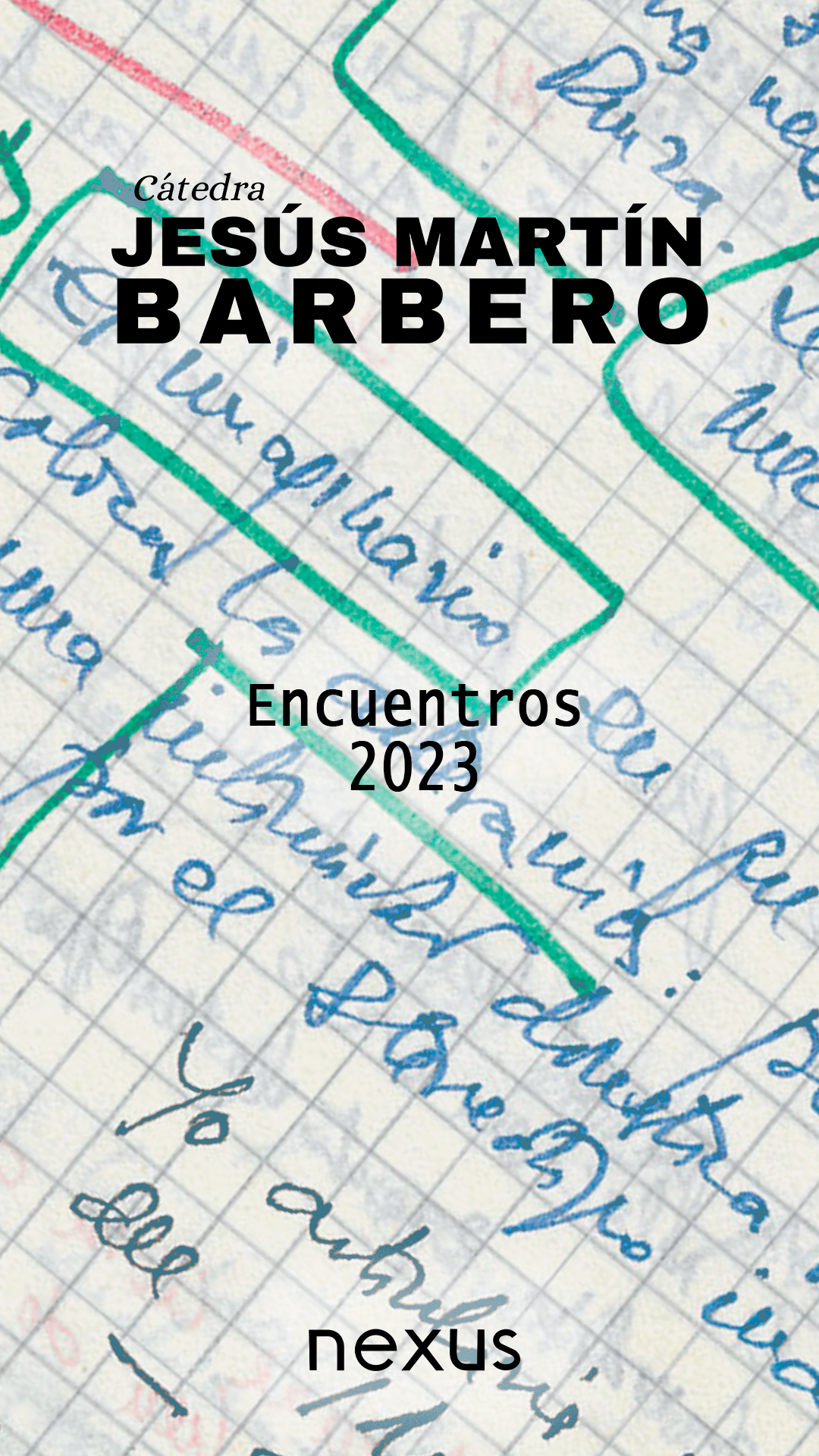Memories Jesús Martín Barbero Chair. Encounters 2023
Main Article Content
Here we publish, with pleasure and joy, some of the papers read, heard, and experienced at the meetings hosted by our Jesús Martín Barbero chair last year in Popayán, where we were hosted by the Social Communication Program of the University of Cauca, and during the MASS 2023 event, the digital arts and cultures encounter of the Faculty of Arts at the University of Valle, in Cali.
- mediations
- identity
- youth
- culture
- Jesús Martín Barbero Chair
Reventamos, estamos que reventamos (pero de información):
Cotes, A. (25 de agosto de 2022). Colombia y España, los países que más escuchan podcast, según la ‘EncuestaPod 2022’. Radio Nacional de Colombia. https://www.radionacional.co/actualidad/tecnologia/encuestapod-2022-colombia-espana-los-paises-que-mas-escuchan-podcast
Fogel, J. F. (31 de julio de 2007). Veinte apuntes sobre el ciberLeviatán. Letras Libres. https://letraslibres.com/revista-espana/veinte-apuntes-sobre-el-ciberleviatan
Galindo Soto, J. (10 de octubre de 2016). Paula Sibilia: la intimidad es un espectáculo. El Economista. https://www.eleconomista.com.mx/opinion/Paula-Sibilia-la-intimidad--es-un-espectaculo-20161010-0001.html
Guarnizo, J. (11 de mayo de 2022). El operativo del Ejército manchado con sangre de civiles. Vorágine. https://voragine.co/historias/cronica/el-operativo-del-ejercito-manchado-con-sangre-de-civiles/
Manovich, L. (2006). El lenguaje de los nuevos medios de comunicación: la imagen en la era digital. Paidós.
Martín-Barbero, J. (1987). De los medios a las mediaciones. (5ª ed.). Convenio Andrés Bello.
Martín-Barbero, J. (s.f.). La telenovela en Colombia: televisión, melodrama y vida cotidiana. https://seminariocultura.sociales.uba.ar/wp-content/uploads/sites/90/2012/01/Mart%C3%ADn-Barbero_La-telenovela-en-Colombia.pdf
Martín-Barbero, J. [@Pensadores.co] (27 de septiembre de 2014). Jesús Martin Barbero: conceptos clave en su obra. Parte 2: ‘Lo popular-masivo’. [Archivo de Video]. YouTube. https://www.youtube.com/watch?app=desktop&v=yp0EHQ07xzk
Martín-Barbero, J. (2017). Ver con los otros: Comunicación intercultural. Fondo de Cultura Económica.
Rincón, O. (26 de noviembre de 2018). La Coolture. Revista Anfibia. https://www.revistaanfibia.com/la-coolture/
Scolari, C. (22 de abril de 2010). JESÚS MARTÍN BARBERO ENTRE LA ECOLOGÍA Y LAS INTERFACES. Hipermediaciones. https://hipermediaciones.com/2010/04/22/jesus-martin-barbero-entre-la-ecologia-y-las-interfaces/
Uranga, W. (24 de noviembre de 2014). “Bienvenidos de vuelta al caos”. Página 12. https://www.pagina12.com.ar/diario/dialogos/21-260497-2014-11-24.html
Sujeto juvenil: La matriz Martin-barberiana de un nuevo actor social:
Barthes, R. (1977). El placer del texto. Siglo XXI Editores.
Baudelaire, C. (1857). A une passante. En Les Fleurs du mal (pp. 125-126). Recuperado de [https://ciudadseva.com/texto/a-una-transeunte/]
Benjamin, W. (1980). Iluminaciones. Taurus. (Obra original escrita en 1935)
Benjamin, W. (2008) La obra de arte en la época de la reproductividad técnica. En W. Benjamin (Aut.), Sobre la fotografía (pp. 91-101). Pre-Textos. (Ensayo original publicado en 1935).
Buck-Morss, S. (1995) Dialéctica de la mirada: Walter Benjamin y la dialéctica de los pasajes. Visor.
Fanon, F. (1963) Los condenados de la tierra. Colección Tiempo presente.
Freire. P. (1970) Pedagogía del oprimido. Tierra Nueva.
Marangoni, P. (2019). Nuevo sensorium: nuevos modos de percibir y sentir la realidad. Introducción a la comunicación. https://introduccionalacomunicacion4to.wordpress.com/2019/05/06/nuevo-sensorium-nuevos-modos-de-percibir-y-sentir-la-realidad/
Martín-Barbero, J. (2002). Oficio de cartógrafo: Travesías latinoamericanas de la comunicación en la cultura. Fondo de Cultura Económica.
Martín-Barbero, J. (2017). Jóvenes entre el palimpsesto y el hipertexto. Nuevos Emprendimientos Editoriales, S.L.
Mead. M. (1971). Cultura y compromiso. Gránica
Reguillo, R. (2006). Emergencia de culturas juveniles. Norma.
Ricoeur, P. (1986). La identidad narrativa. http://textosontologia.files.wordpress.com/2012/09/identidad-narrativa-paul-ricoeur.pdf
Ricoeur, P. (1998). Tiempo y narración. Siglo XXI.
Serrés, M. (2014). Pulgarcita. Gedisa.
Verón, E. (1974). Comunicación de masas y producción de ideología: acerca de la constitución del discurso burgués en la prensa semanal. Revista Latinoamericana de Sociología, (1), pp. 9-42. https://shs.hal.science/halshs-01484032
Melodrama y Millennials:
Benjamin, W. (2001). El narrador: consideraciones sobre la obra de Nikolai Leskov. Ediciones Alfaguara. (Obra original publicada en 1936)
Martín-Barbero, J. (1987). De los medios a las mediaciones. (5ª ed.). Convenio Andrés Bello.
Morin, E. (1960). Le cinéma ou l’homme imaginaire. Éditions de Minuit.
Valle-Inclán, R. M. (2017). Sonata de estío. Textos.info. (Obra original publicada en 1926)
Downloads

This work is licensed under a Creative Commons Attribution-NonCommercial 4.0 International License.
Nexus agrees with the Creative Commons BY NC 4.0 licence.





